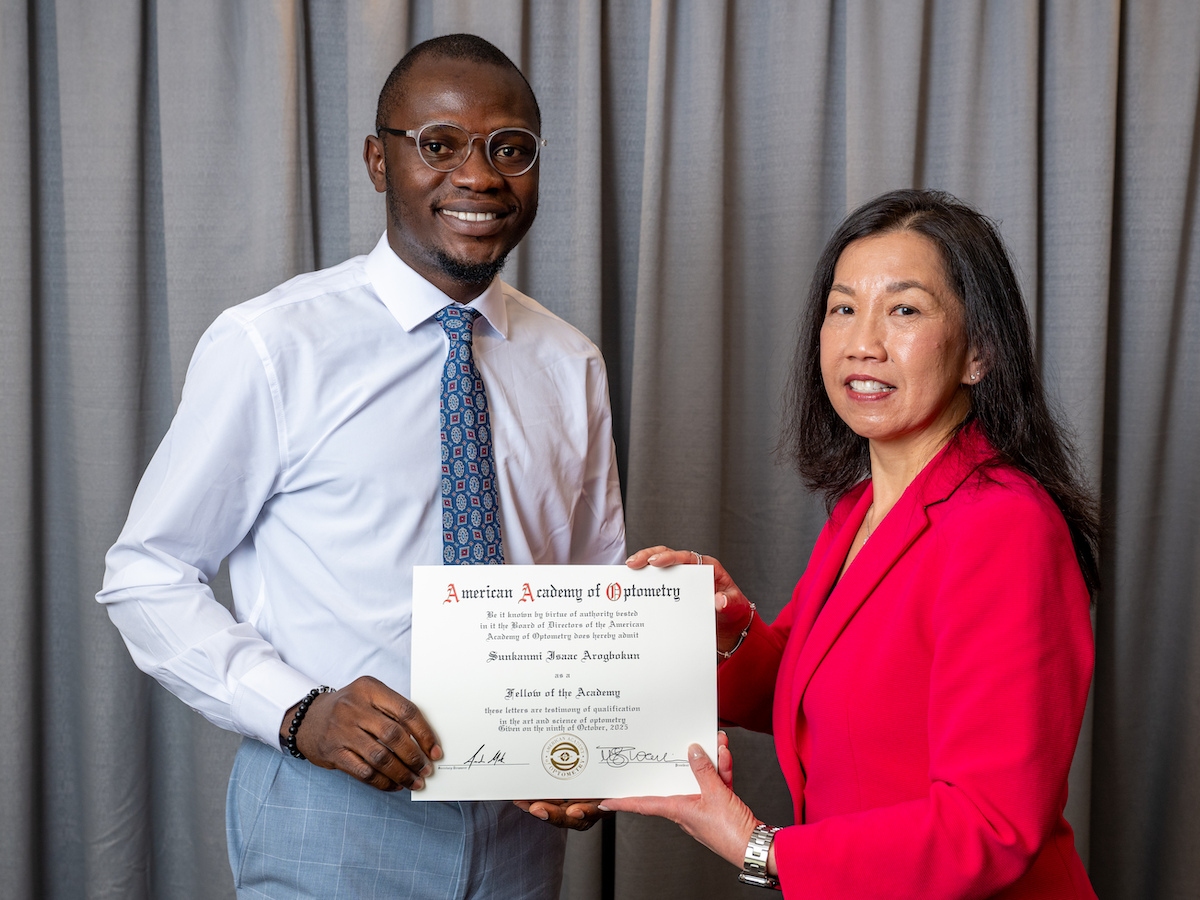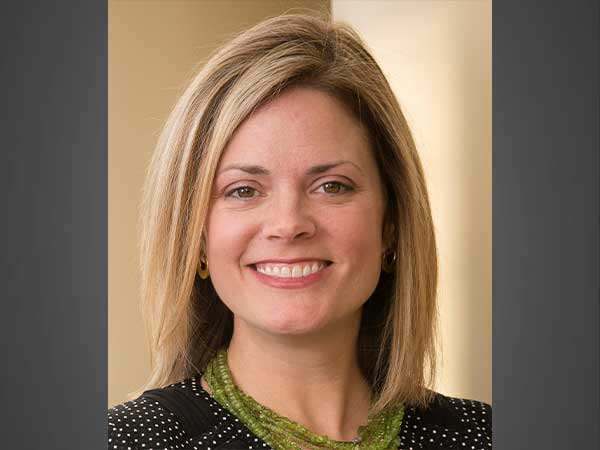Story written by Matt Windsor, UAB Reporter
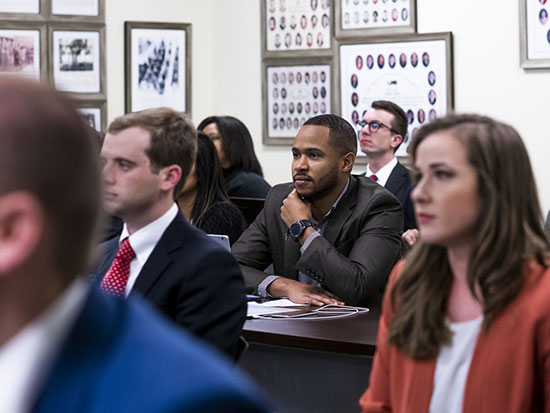 Jordan Clark (center) said the MSHA program's Student Workforce Program was transformative. "To affect people's lives so early on in my career gave me the confidence to take on more than I expected I could handle."When students in the top-ranked health administration program in the United States look to apply their training in the real world, they don’t have to go far. One of the nation’s top academic medical centers is just across the street.
Jordan Clark (center) said the MSHA program's Student Workforce Program was transformative. "To affect people's lives so early on in my career gave me the confidence to take on more than I expected I could handle."When students in the top-ranked health administration program in the United States look to apply their training in the real world, they don’t have to go far. One of the nation’s top academic medical centers is just across the street.
For the past five years, the UAB Health System Student Workforce Program has connected students in the School of Health Professions’ Master of Science in Health Administration (MHSA) program — ranked No. 1 in the 2020 U.S. News graduate program rankings — with executives at UAB Medicine, the largest academic medical center in Alabama and one of the top such centers in America. “All our first-year students have jobs with the Health System for 10 hours per week, in areas from hospital operations and corporate strategy to telemedicine,” said Amy Landry, Ph.D., director of graduate programs in health care administration and Howard W. Houser Endowed Professor in Health Administration in the Department of Health Services Administration. “It’s a great way for our students to apply in the afternoon what they learn in the morning.”
A competitive edge
MSHA students have been a crucial part of process-improvement initiatives in the emergency department, helped UAB expand its telemedicine program to more rural hospitals in Alabama and laid the groundwork for a pioneering partnership with ride-hailing company Uber to transport patients. “ [UAB Health System CEO Will Ferniany, Ph.D., who developed the initial idea for the program with Health Administration department chair Christy Lemak, Ph.D.] tells us that executives in the Health System depend on the students now to help support their work,” Landry said. “When they start a new project, they plan on MSHA student support right from the beginning.”
Working in the learning placeIn this series, UAB Reporter explores campus internship programs — in areas of strategic interest — through the eyes of the students, staff and faculty who make them successful. |
When UAB Health System Chief Diversity Officer Deborah Grimes began developing a program to encourage students in Birmingham high schools to consider careers in health professions, she had support from MSHA student Jordan Clark. “Working on a program like this was just an outstanding experience,” Clark said. “To affect people’s lives so early on in my career gave me the confidence to take on more than I expected I could handle.” Being paired with Grimes was a transformative experience as well, Clark added. “I did my law degree in Jamaica before transitioning into health care,” he said, “and Ms. Grimes got her law degree after originally training as a nurse. She had great insight on how a leader operates in a health care organization and on the transferrable skills I could bring from my legal training. Being connected to a leader who can train and mentor and help guide you along the path is something that sets the UAB MSHA program apart.”
The paid positions are a welcome bonus for students, Landry added. But the experience they offer is invaluable. “In their third years, the students are required to do an administrative residency or fellowship in which they compete with students from across the country,” she said. “The workforce program gives them a real advantage. They have things to talk about with prospective employers, and they already have a good idea of what area they want to specialize in. And they have success everywhere, from California to New York.”
MSHA students and faculty explain what sets the program apart in this video.
Clark concurs from Florida, where he is now completing his fellowship at top-ranked Tampa General Hospital. His experience with Grimes led directly to an opportunity in the UAB Health System’s Performance Excellence group, where he worked on a host of projects to optimize process and operations and — just as important, he says — built relationships with leaders from across the medical center. “My big-picture dream is to be a chief operating officer,” he said. “To reach that goal, I need to learn from the best, be mentored by the best and be trained by the best. That’s why I came to UAB.”
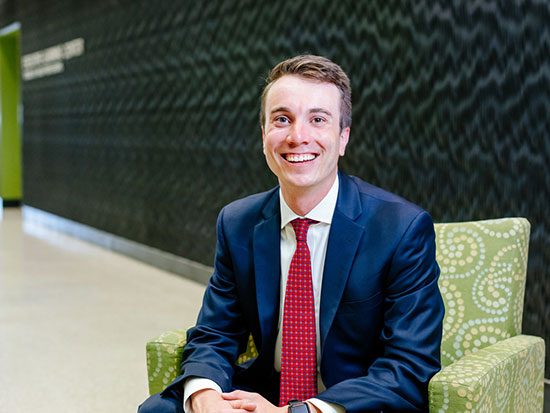 Bradley Tipper worked on UAB telemedicine efforts, experience he was able to put to use during his summer internship at Intermountain Healthcare in Utah.
Bradley Tipper worked on UAB telemedicine efforts, experience he was able to put to use during his summer internship at Intermountain Healthcare in Utah.
‘UAB was an obvious choice’
Bradley Tipper, who is starting his second year in the MSHA program this fall, had worked in health care policy for a Virginia-based economic research center and a nonprofit hospital in Georgia before he decided to apply for health administration master’s programs. “I have been interested in health care administration for a long time, and I wanted to get in on the ground floor,” he said. “UAB was an obvious choice. It’s the No. 1 program in the country, and the student workforce program was really a big factor in my prioritizing UAB. I only applied to UAB and am grateful to be a part of Class 54.”
Tipper spent the past year working with Eric Wallace, M.D., medical director for UAB eMedicine, the health system’s telemedicine initiative. “From my previous experience in health policy, one of the areas our group focused on was innovative care-delivery models, and telemedicine is a huge piece of figuring out that puzzle,” Tipper said. His main project involved designing an improved data-collection system for the UAB eMedicine team, particularly for telestroke services. As of this past spring, UAB eMedicine has telestroke partnerships with four rural hospitals affiliated with the UAB Health System. “I was working on collecting better data from the clinicians and the telemedicine carts they were using,” Tipper said. “And then taking that data to create a dashboard that could be used by those clinicians and administrators to evaluate and improve outcomes.” The assignment “provided me a great experience and insight into what UAB is doing to improve rural care through telehealth,” he said.
Tipper was able to apply that experience directly in his internship this summer with Intermountain Healthcare, a 24-hospital not-for-profit system with facilities in Utah and Idaho. “They have established a virtual hospital that offers more than 40 clinical services via telehealth and has more than 500 caregivers who cover everything from urgent care to mental health counseling and newborn services,” Tipper said. “I’ve been particularly focusing on telehospitalist services that provide nighttime coverage for rural facilities, looking at readmission rates, among other things, to see if the newly implemented program is improving health outcomes by treating them sooner and closer to home, which will also hopefully will improve long-term health outcomes for the community.”
In on the ground floor
Nigel Brown was recruited to UAB in 2015 to establish a department of performance excellence in the UAB Health System. “We’re an internal department of improvement consultants and partners for the Health System and UAB Hospital,” explained Brown, who is executive director of Transformation & Performance Excellence and holds a master’s degree in health care quality and safety from UAB in addition to his Process Improvement Master Blackbelt. Soon after he arrived, a colleague told Brown about the resource available in the MSHA students. “I immediately recruited some of these students to help get the department started,” Brown said. “They have a passion for learning and understanding that has been extremely valuable.”
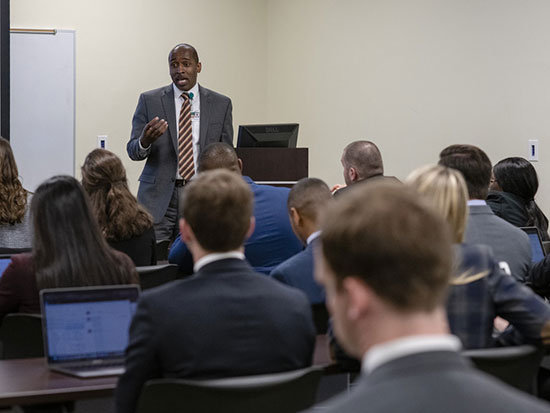 Nigel Brown (teaching an MSHA course, above) has repeatedly hired students to participate in projects for his performance excellence department in UAB Health System and UAB Hospital.In return, Brown offers students hands-on experience in a range of critical projects, from enhancing the ambulatory triage process and patient discharge efficiency at UAB Hospital to conducting SWOT analyses that informed the department of cardiology’s strategic plan. “The students do root cause analysis, process mapping sessions, time-and-motion studies and more,” Brown said. “They also started a system to interview and onboard future MSHA students and incorporate them in the workflow.”
Nigel Brown (teaching an MSHA course, above) has repeatedly hired students to participate in projects for his performance excellence department in UAB Health System and UAB Hospital.In return, Brown offers students hands-on experience in a range of critical projects, from enhancing the ambulatory triage process and patient discharge efficiency at UAB Hospital to conducting SWOT analyses that informed the department of cardiology’s strategic plan. “The students do root cause analysis, process mapping sessions, time-and-motion studies and more,” Brown said. “They also started a system to interview and onboard future MSHA students and incorporate them in the workflow.”
‘Treated as full-time employees’
“When they go out, they are treated as full-time employees, not students,” Brown emphasized. “They may be presenting to a roomful of clinicians at a department’s Grand Rounds or to a group of executives. In a matter of three-and-a-half years, we’ve worked with more than a dozen students on well over 25 projects.”
In today’s ever-shifting health care environment, “new things are being implemented all the time — new reimbursement models, for instance,” Tipper said. “Our professors do a great job of giving us that information in the classroom. And getting to see first hand how these changes affect day-to-day operations at a top-tier academic medical center like UAB is important to our educational experience. It was really exciting for me to know I could work part-time throughout the week for UAB Hospital and learn from the health care leaders who are working tirelessly to improve the health care system every day.”
Many of the MSHA students are offered positions in their second years as well, where they can continue to make a difference, Landry noted. “We often have second-year students leading projects that they started as first-year students,” she said. “This program has really been transformational for our students, but one of the best outcomes is to see how they can add value to UAB’s patient care mission.”
